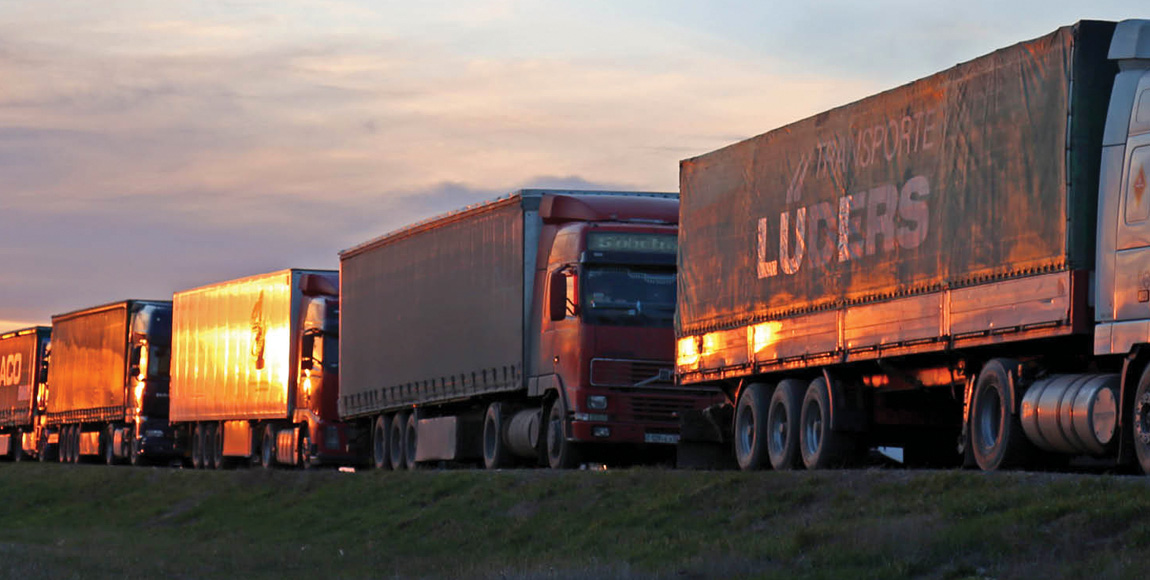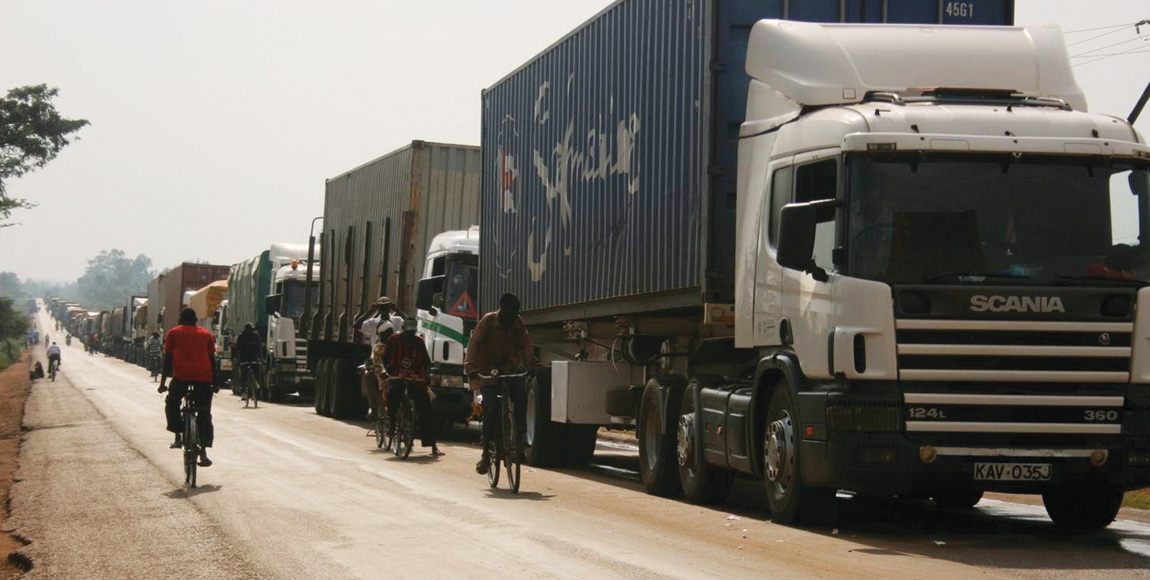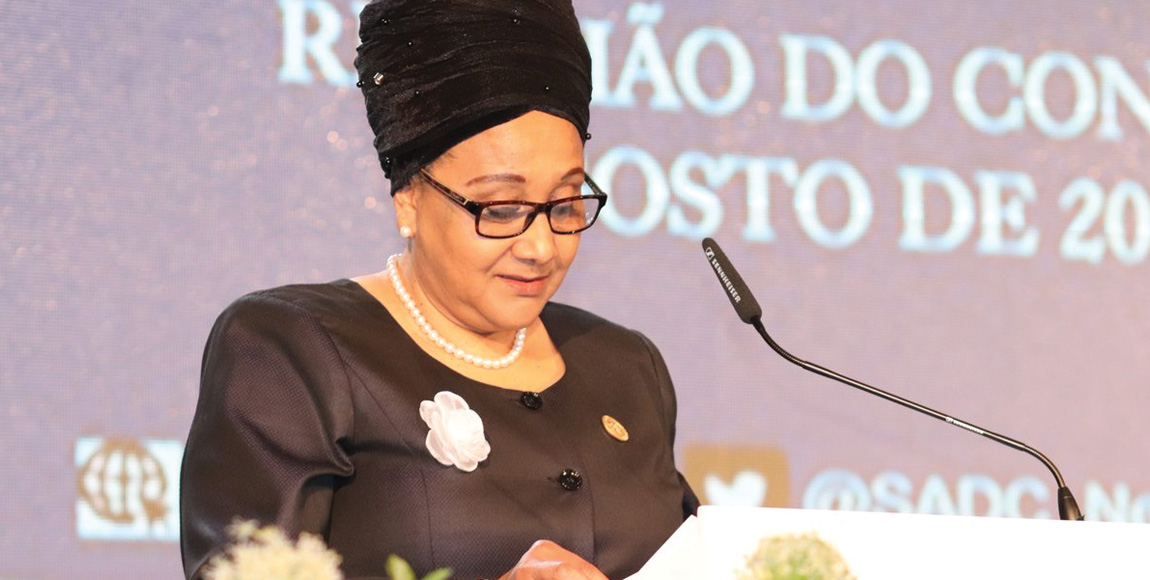SADC drags its heels

The most recent update from the Southern African Development Community (SADC) regarding the state of play of its much-vaunted transportation infrastructure projects – which are aimed at helping to transform the road network, border crossings and logistics hubs in the sub-Saharan region – indicates that not much has been achieved
Road transport is the preferred method of moving goods across much of Africa’s sub-Saharan expanse, with truck cargoes accounting for about 80 percent of intra-SADC trade, according to some studies.
Presumably, that’s one of the reasons why the SADC decided in August, 2012, to implement a programme aimed at transforming road infrastructure in the region as part of a broader plan meant to improve the standard and quality of life of the people of southern Africa.
In the organisation’s estimation, the population in sub-Saharan Africa is expected to exceed 400 million by 2027. “This places greater demand on the need for robust and modern infrastructure that meets the developmental aspirations of all of the SADC’s citizens,” says Stergomena Lawrence Tax, the organisation’s executive secretary.
Writing in a recently released report entitled SADC Regional Infrastructure Development: Short Term Action Plan Assessment 2019, Tax says that when they met to adopt the programme – dubbed the Regional Infrastructure Development Master Plan (RIDMP) – the SADC’s heads of state recognised transport infrastructure as being a priority in terms of need for improvement, ranking it alongside access to energy, information technology, potable water and sanitation services in importance.
“The SADC’s member states recognised that a modern and reliable infrastructure provides the appropriate foundation for economic development and growth, as well as supporting socially disadvantaged regions through integration,” she says.
Revised in 2015, the plan identifies six development clusters for priority projects – energy, water, transport, meteorology, tourism and information communication technology (ICT) – with improvements to be implemented in three phases: the Short Term Action Plan (STAP), covering 2012 to 2017; the Medium Term Action Plan, running from 2017 to 2022; and the Long Term Action Plan, scheduled to conclude by 2027.

“The STAP period has come to an end, with the SADC now preparing to implement the Medium Term Action Plan known as STAP II. In order to better inform this next phase, as well as subsequent infrastructure development initiatives, it is important to review status of the implementation of regional infrastructure projects identified under STAP,” Tax writes.
The news is not good. While 98 projects across the six clusters were planned for completion by 2017, the assessment report – conducted by the Zimbabwe-based Southern African Research and Documentation Centre (SARDC) – indicates that only five percent met target, with the majority, representing 51 percent of the total, still in the early stages of pre-feasibility or feasibility studies.
“This gives an indication of the work needed to move from an untenable situation in order to complete targeted projects,” Tax says. “The findings form an important part of the region’s strategy to improve the implementation of the master plan. It provides a call for action to all stakeholders as it indicates the very slow pace – and even stagnation – of some projects.”
She adds: “While the situation is disheartening, I wish to acknowledge the efforts that are underway within the region to overcome the impediments to pace. This includes work being done through the SADC secretariat in partnership with the African Development Bank (AfDB) and the Development Bank of Southern Africa (DBSA).”
According to Tax, as at June 30 this year 62 projects had been identified to enable readiness for investment, since the assessment report clearly indicates the challenges faced by SADC states in raising the required funding.
She says impediments to progress in meeting STAP’s original target dates include:
• A limited pipeline of bankable projects coupled with limited resources and capacity for project preparation;
• Limited investment funding;
• A complex and weak institutional framework at national, regional and continental levels, sometimes with limited clarity of the mandates for the key role players;
• Changing priorities over the duration of the STAP phase largely at national levels;
• Differences in priority by different states on cross-border projects; and
• Donor fatigue in respect of support for infrastructure projects.
“There is,” she writes, “an expectation that the lessons learnt can inform the next phase of priority projects.”
Putting the issues into perspective, the report says Africa’s rapid economic growth, growing consumer demand, expanding economies, urbanisation and surging trade levels have intensified the need for new systems.
“The SADC adopted the RIDMP in 2012 with the purpose of guiding the region’s development and rehabilitation programme up to 2027. Member states recognise that a robust infrastructure network will create the requisite capacity for sustained economic growth and development.”
The report points out that the AfDB estimates that the continent’s infrastructure needs are between US$ 130 billion (about R1,9 trillion) and US$ 170 billion (about R2,5 trillion) a year, with an annual financing gap of US$ 68 to US$ 108 billion (about R1.01 to R1,60 trillion).
“The continent needs to reduce its infrastructure deficit to achieve the desired structural transformation as well as to accelerate the pace of integration. According to the Infrastructure Consortium for Africa, the high infrastructure deficit means that services on the African continent cost more than almost any other place in the world.”
In this respect, the report says Africa’s rural communities pay 60 to 80 times more per unit for energy than urban populations in industrialised nations to the north. Also, poor quality infrastructure services are known to increase the input material costs of consumer goods by up to 200 percent in some African countries.
“Small and medium enterprises (SMEs) tend to face proportionally higher supply chain barriers and costs. It is clear that access to adequate infrastructure has a bearing on livelihoods and overall economic output. Accelerating the infrastructure development projects will therefore reduce the cost that Africans pay in accessing basic goods and services, a condition that should contribute to poverty eradication and employment creation.”
According to the report, delayed implementation of infrastructure projects comes at a price, since it results in the escalation of costs against a backdrop of financing constraints. “With only a handful of completed projects, the region’s infrastructure gap is widening, particularly in the context of population and economic growth.
“This is reflected in terms of the insufficient energy supply, the highly priced, unpredictable transport and logistics services, especially for landlocked states, and a lack of low-cost access to information and communication technologies, which render poor services in most localities.”
Additionally, the report identifies some of the key challenges sub-Saharan Africa faces in its efforts to accelerate infrastructure deployment: weak legal, regulatory and institutional frameworks; weakness in infrastructure planning and project preparation; poor governance; and rampant corruption.
“Based on about every indicator of infrastructure coverage, Africa – and hence the SADC region – lags behind peers in other parts of the developing world. The differences are particularly large in the case of paved roads, broadband coverage, and power-generation capacity and transmission.”

So, what the state of play regarding projects in the transport infrastructure sector in the SADC region? The following lists some of the projects in which the organisation is involved, and their status as at June 30 this year:
Francistown – Nata Road (190 km)
Status: Feasibility study
Countries involved: Botswana
Progress to date: Feasibility study and detailed design for Sebina-Nata portion (140 km) completed. Feasibility study and detailed design for the remaining 50 km required.
Kazungula (Kasane)-Pandamatenga-Nata Road
Status: Project design
Countries involved: Botswana
Progress to date: This is a fully prepared project which the Botswana Ministry of Finance has confirmed that it will fund.
Kazungula Bridge with One Stop Border Post (OSBP)
Status: Implementation
Countries involved: Botswana, Zambia and Zimbabwe
Progress to date: Construction of the road and rail bridge is underway. The OSBP is a work in progress. Project scheduled to be completed in 2020.
Bulawayo-Beit Bridge Road (321 km)
Status: Project design
Countries involved: Zimbabwe
Progress to date: A feasibility study completed. Draft final report and draft bidding documents submitted in July 2018. Identification of funding sources for construction required.
Bulawayo-Victoria Falls Road (439 km)
Status: Feasibility study
Countries involved: Zimbabwe
Progress to date: A feasibility study to be commissioned. Identification of additional funding sources required.
Harare-Nyamapanda Road (238 km)
Status: Pre-feasibility study
Countries involved: Zimbabwe
Progress to date: Identification of funding sources required.
North-South Dry Port in Lusaka, Copper Belt or Central Provinces
Status: Pre-feasibility study
Countries involved: Zambia
Progress to date: Still at concept stage. Identification of funding sources for pre-feasibility and detailed design required.
Durban Port Dig Out for Expansion
Status: Feasibility study
Countries involved: South Africa
Progress to date: Pre-feasibility study completed. Review of the feasibility study and funding required.
Plumtree-Ramokgwebane OSBP
Status: Feasibility study
Countries involved: Botswana and Zimbabwe
Progress to date: Situational analysis completed. Feasibility study, detailed design and identification of funding sources required.
Pioneer Gate-Skilpadhek OSBP
Status: Implementation
Countries involved: Botswana and South Africa
Progress to date: South African side completed. Identification of funding sources for detailed design and construction for the Botswana side required.
Nakonde-Tunduma OSBP
Status: Implementation
Countries involved: Zambia and Tanzania
Progress to date: Construction of the Zambian side completed. Detailed feasibility study and designs completed for the Tanzanian side.
Beit Bridge OSBP
Status: Project design
Countries involved: Zimbabwe and South Africa
Progress to date: Mutual administrative assistance agreement signed between the customs units of South Africa and Zimbabwe. A Beit Bridge Border Efficiency Management Systems Inter-Ministerial Committee has been commissioned to draw up an OSBP draft agreement. Master Plan completed on the South African side, which needs to be harmonised with the Zimbabwean side. Action required includes concluding an OSBP agreement and identification of funding sources.
Kasumbalesa OSBP
Status: Implementation
Countries involved: Democratic Republic of Congo (DRC) and Zambia
Progress to date: The building on the Zambian side is constructed and hardware set-up completed. Similar work is set to commence on the DRC side of the border.
Martins Drift Bridge Expansion
Status: Feasibility study
Countries involved: Botswana and South Africa
Progress to date: Project yet to commence – feasibility study and detailed design required.
Martins Drift Bridge OSBP
Status: Pre-feasibility study
Countries involved: Botswana and South Africa
Progress to date: Project yet to commence – feasibility study and detailed design required.
Inland Cargo Dry Port, Dondo – Inland Cargo Terminal, Inchope
Status: Design study
Countries involved: Mozambique
Progress to date: Feasibility study completed.
Beira-Lobito Corridor
Status: Implementation
Countries involved: Angola, DRC and Zambia
Progress to date: Feasibility and assessment studies completed August, 2012. Angola and Zambia are progressively rehabilitating and constructing the road networks in this region to SADC standards. In order to relieve congestion, Zambia is upgrading road links to the DRC which are alternatives to Kasumbalesa. The convergence point is Jimbe, where a new bridge and modern border infrastructure is planned. There is no clear time-based programme regarding the rehabilitation of the road network in the DRC on this corridor. The SADC secretariat is planning to convene a meeting of the three member states in order to address infrastructure, institutional and legal issues on the corridor.
Rehabilitation of Makambako-Songea Road (295 km), Mtwara Corridor
Status: Project design
Countries involved: Tanzania and Malawi
Progress to date: Feasibility study and detailed designs completed in August, 2014 – funds are being solicited for financing of the civil works.
Dar es Salaam-Chalinze Toll Road (99,7 km)
Status: Feasibility study
Countries involved: Tanzania
Progress to date: A public-private partnership model is being considered. The transaction advisor is currently reviewing the feasibility study and detailed designs.
Port of Walvis Bay Container Terminal
Status: Implementation
Countries involved: Namibia
Progress to date: Construction is at an advanced stage.
Road Rehabilitation RN 13, Tolanaro-Ambovombe
Status: Feasibility study
Countries involved: Madagascar
Progress to date: Preparatory studies conducted and tender ready.
Road Rehabilitation RN 6, Antsiranana-Ambanja
Status: Feasibility study
Countries involved: Madagascar
Progress to date: Preparatory studies conducted and tender ready.
Kisantu-Ndidinga-Kindopolo Road (117 km)
Status: Feasibility study
Countries involved: DRC
Progress to date: Concept note to undertake the feasibility study has been completed.
Lubumbashi-Bukavu Road (1 402 km)
Status: Feasibility study
Countries involved: DRC
Progress to date: Project is yet to be implemented.
Tshikapa-Kananga-Kisangani Road (1 524 km)
Status: Feasibility study
Countries involved: DRC
Progress to date: Project is yet to be implemented.
Port Kalemie Rehabilitation
Status: Feasibility study
Countries involved: DRC
Progress to date: Project is yet to be implemented.
Lusaka to Luangwa Bridge, Road Rehabilitation
Status: Feasibility study
Countries involved: Zambia
Progress to date: Feasibility study completed.
Kafue-Lion’s Den Feasibility Studies and Engineering Designs
Status: Feasibility study
Countries involved: Zambia
Progress to date: Project is yet to be implemented.
Livingstone-Kazungula-Sesheke Road
Status: Feasibility study
Countries involved: Zambia
Progress to date: Project is yet to be implemented.
Modernisation of Mpulungu Port
Status: Feasibility study
Countries involved: Zambia
Progress to date: Project is yet to be implemented.
Mwami/Mchinji OSBP
Status: Feasibility study
Countries involved: Zambia
Progress to date: Project is yet to be implemented.
Rehabilitation of T1, Kafue Turnpark-Mazabuka Road
Status: Feasibility study
Countries involved: Zambia
Progress to date: Project is yet to be implemented.
Serenje-Mpika Road
Status: Financial closure
Countries involved: Zambia
Progress to date: Feasibility study completed.
Rehabilitation of Plumtree-Bulawayo-Gweru-Harare-Mutare Road
Status: Implemented
Countries involved: Zimbabwe
Progress to date: Re-surfacing of the road and implementation of tolling system has been completed.
Manyoni-Tabora-Kigoma Road
Status: Implemented
Countries involved: Tanzania
Progress to date: Nyahua-Chaya section is 26-percent complete. Urambo-Kaliua section is 35-percent complete. Financial mobilisation has been a challenge.
Published by
Focus on Transport
focusmagsa




